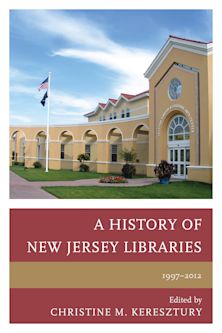The Reinvention of the U.S. Academic Library
1990 to 2025
The Reinvention of the U.S. Academic Library
1990 to 2025
Description
Focusing on U.S. academic libraries, The Reinvention of the U.S. Academic Library begins by providing a concise history of the traditional role and function of academic libraries from their earliest times up to the dawn of the Digital Age and the spread of digital technology into all aspects of academic research and scholarly communication. This introduction is followed by chapters analyzing how digital technology has transformed, over the course of a few swift decades, not only the role and function of academic libraries, but also the nature of scholarly communication itself.
Specifically, The Reinvention of the U.S. Academic Library will consider how digital technology has changed the way academic libraries:
- Acquire and exercise bibliographic control over collections.
- Provide equitable access to information. Allocate and utilize library space. Instruct and guide students, faculty, and others.
- Relate to the larger academic and scholarly publishing communities. Sustain scholarly communications.
Table of Contents
Acknowledgements
Introduction
Chapter 1: Acquiring Information in Digital Containers: Old Wine in New Bottles
Chapter 2: Electronic Journals Take the Field
Chapter 3: The Open Access Revolution
Chapter 4: From the Card Catalog to the Semantic Web: The Digital Odessey of Cataloging and Technical Services
Chapter 5: Distinctive Collections Go Digital
Chapter 6: Reference, Instruction, and Facilities: The Challenge of Meeting Changing User Expectations in the Digital Age
Chapter 7: The Future of the U.S. Academic Library
Author Bio
Product details
| Published | Jul 10 2025 |
|---|---|
| Format | Ebook (PDF) |
| Edition | 1st |
| Extent | 224 |
| ISBN | 9798765154816 |
| Imprint | Bloomsbury Libraries Unlimited |
| Illustrations | 7 b/w photos; 8 tables |
| Publisher | Bloomsbury Publishing |

ONLINE RESOURCES
Bloomsbury Collections
This book is available on Bloomsbury Collections where your library has access.


































